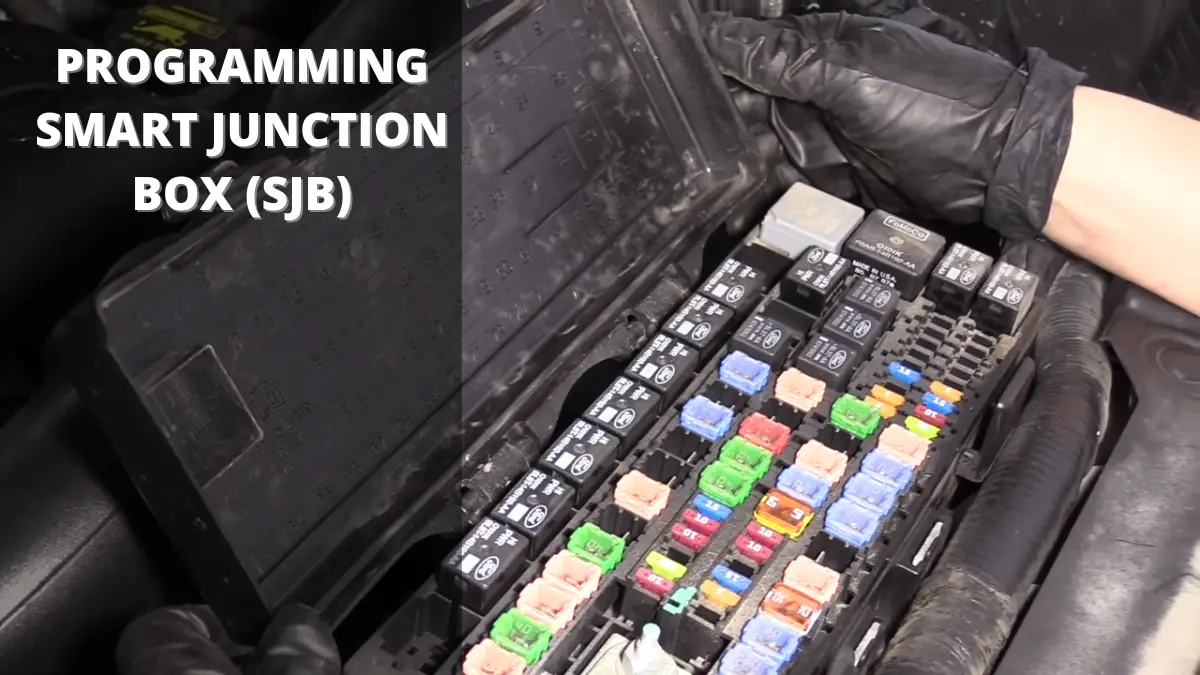The Smart Junction Box (SJB) is a microprocessor-based control unit responsible for managing various electrical systems within your vehicle. It streamlines the distribution of power to multiple components, such as lights, wipers, and door locks.
This intelligent approach helps reduce the complexity of wiring and enhance vehicle diagnostics capabilities.
How the SJB Works
The SJB receives input signals from various sensors and switches throughout the car. Based on these inputs, it makes decisions and sends output signals to the corresponding electrical components. This process helps ensure that all systems function seamlessly and efficiently.
Tools and Equipment You’ll Need
Laptop or Tablet
You’ll also need a laptop or tablet to run the diagnostic software and interact with the vehicle’s computer system. Ensure that the device is compatible with the scan tool and has the required software installed.
Appropriate Software
To access and configure the SJB, you’ll need software specifically designed for your vehicle’s make and model. The software will enable you to read and modify settings within the SJB module.
Connecting to the Vehicle’s Computer System
Locating the OBD-II Port
First, locate your car’s OBD-II port, usually found under the dashboard on the driver’s side. This port provides a direct connection to your vehicle’s computer system.
Establishing a Connection
Plug your diagnostic scan tool into the OBD-II port, then connect the scan tool to your laptop or tablet. Once connected, launch the diagnostic software, and follow the on-screen prompts to establish a connection with your vehicle’s computer system.
Accessing the SJB Module
Identifying the SJB Module
Once connected, navigate through the diagnostic software to locate the SJB module. This module may be listed under various names, such as Body Control Module (BCM) or Central Electronics Module (CEM).
Consult your vehicle’s service manual or the software documentation for the correct terminology.
Entering the SJB Module
Select the appropriate SJB module within the diagnostic software. Once you’ve entered the module, you should see a list of settings and functions specific to the Smart Junction Box. This interface will allow you to configure the SJB as needed.
Configuring SJB Settings
Making Necessary Changes
Within the SJB module interface, locate the settings that require modification. This could include enabling or disabling specific features, adjusting the behavior of certain components, or changing the configuration of electrical circuits.
Ensure that you understand the impact of these changes and consult your vehicle’s service manual or the software documentation for guidance.
Saving and Exiting
After making the necessary changes, save your new settings to the SJB module. This process may vary depending on the diagnostic software you’re using. It’s crucial to follow the software’s instructions to ensure that the new settings are saved correctly.
Once the changes are saved, exit the SJB module and disconnect the diagnostic scan tool from the OBD-II port.
Testing the SJB
Confirming Proper Functionality
With the updated settings saved, it’s time to test the SJB and ensure that it’s functioning correctly. Turn on your vehicle and check the components controlled by the SJB. Verify that they’re operating as intended based on the changes you made during programming.
If necessary, perform additional tests or diagnostics to confirm that the SJB is functioning correctly.
Troubleshooting
If you encounter issues with the SJB or the affected components after programming, revisit the diagnostic software and double-check your changes. Ensure that all modifications were saved correctly and that no additional settings were accidentally altered.
Conclusion
Programming the Smart Junction Box is a crucial skill for modern car mechanics and enthusiasts alike. By following this comprehensive step-by-step guide, you can successfully configure your vehicle’s SJB and enhance its electrical systems.
Remember to have the right tools, software, and knowledge on hand to ensure a smooth and successful process.
Frequently Asked Questions
- What is the primary purpose of a Smart Junction Box? The Smart Junction Box is designed to manage and distribute power to various electrical components within a vehicle. It streamlines wiring and enhances diagnostics capabilities.
- Can I program the SJB myself, or should I seek professional assistance? If you have the necessary tools, software, and knowledge, you can program the SJB yourself. However, if you’re unsure or uncomfortable with the process, it’s best to seek professional assistance.
- What happens if I make a mistake while programming the SJB? If you make a mistake during programming, you may experience issues with the affected components or systems. Revisit the diagnostic software and double-check your changes to resolve any problems.
- Do all vehicles have a Smart Junction Box? Not all vehicles have a Smart Junction Box. The prevalence of SJBs varies depending on the make, model, and year of the vehicle. Consult your vehicle’s service manual to determine if it has an SJB.
- How often should I reprogram my Smart Junction Box? Reprogramming the SJB is typically only necessary when making changes to the vehicle’s electrical systems or when troubleshooting issues. There’s no set schedule for reprogramming.


